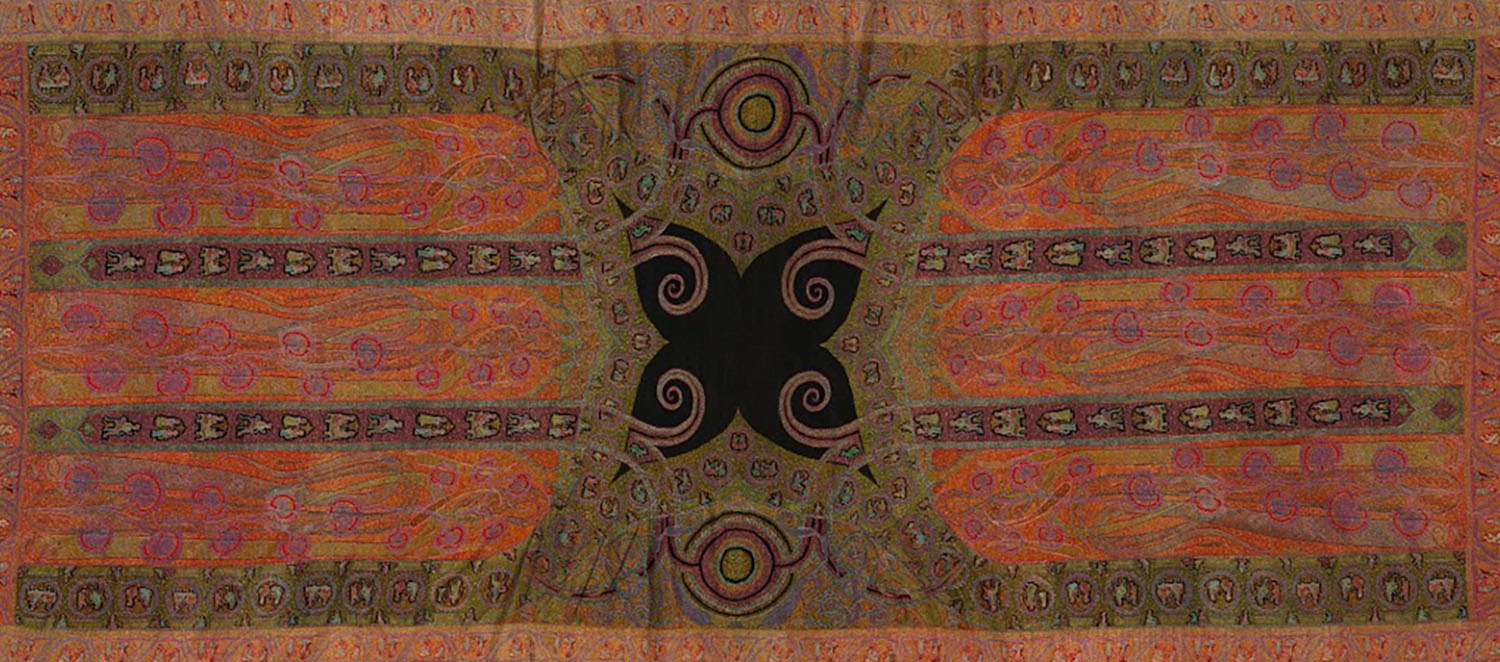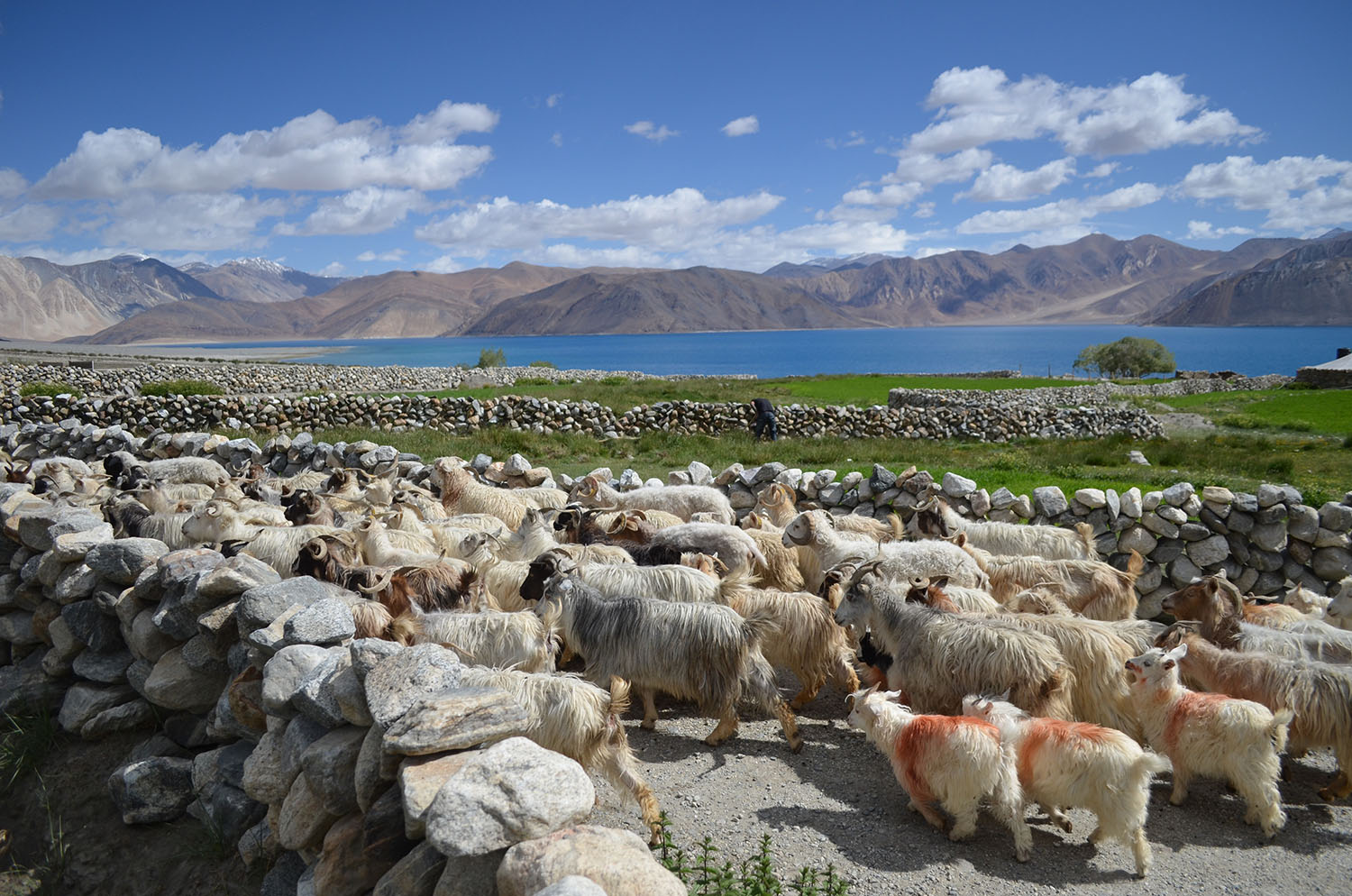ARTICLE
Pashmina
A fine variety of yarn obtained from the fleece of Changthangi goats native to Mongolia, China, Nepal and Ladakh, pashmina – originating from the Persian pashm, meaning “wool” – is also known as cashmere, an anglicised name for Kashmir where the fibre was woven into shawls. Pashmina is substantially warmer, softer and lighter than sheep wool, making it a luxury material for durable apparel worn in cold climates.
The raw fleece is collected in the spring when the goats shed their fur. Pashmina goats have two types of hair: a soft undercoat used for the yarn and coarser bristles called guard hair. The two are separated by combing the softer hair out by hand, particularly from around the neck and underbelly of the goat. The fibres are exceptionally fine, ranging from twelve to sixteen microns (μm) in diameter. Yarn is then spun from this hair and can either be knitted into clothing such as sweaters and gloves, or woven into fabric from which coats, trousers, blankets and other products can be stitched. Apart from plain-weave fabrics used by locals in the weaving community, pashmina yarn is also used to make kani shawls on which intricate floral butas are woven.
Pashmina garments were coveted as luxury goods from Northern Africa to South Asia since the sixteenth century and became popular among the European elite after India’s colonisation. Pashmina goods, even after use, had great value both for resale and gifting in Europe and were often passed between generations as family heirlooms. Colonial control over trade in South Asia and the popularity of pashmina garments fuelled the desire to eventually produce the fabric in Europe itself. As with cotton fabrics such as calico and chintz, this production took the form of mechanising and appropriating designs native to Kashmir.
Until the 1950s, Ladakhi traders were the primary middlemen in the local market for pashmina fibre, as the Changthang region of Ladakh lay between western Tibet where the goats were raised, and Kashmir, where the shawls were woven. Since the Chinese occupation of Tibet and the closing of the border, goat-rearing has had to take place in a smaller area in Ladakh with government support. Today, China is the largest producer of raw pashmina yarn in the world and the highest quality fabric is made by European brands. It is sometimes also woven together with silk, sheep wool or synthetic fibres to add elasticity, lightness and make it more affordable. This – coupled with the high demand for pashmina products worldwide – has made it difficult to regulate their quality and distribution.
The government of India has launched various schemes to boost the production of pashmina goods in their historical regions, such as setting up Changra goat-rearing farms in Upshi, Leh, supporting women weavers through the Ladakh Environmental Health Organisation (LEHO) and pashmina collection and spinning facilities organised by the Handicrafts Centre, Leh.
Bibliography
Our website is currently undergoing maintenance and re-design, due to which we have had to take down some of our bibliographies. While these will be re-published shortly, you can request references for specific articles by writing to hellomapacademy@map-india.org.








